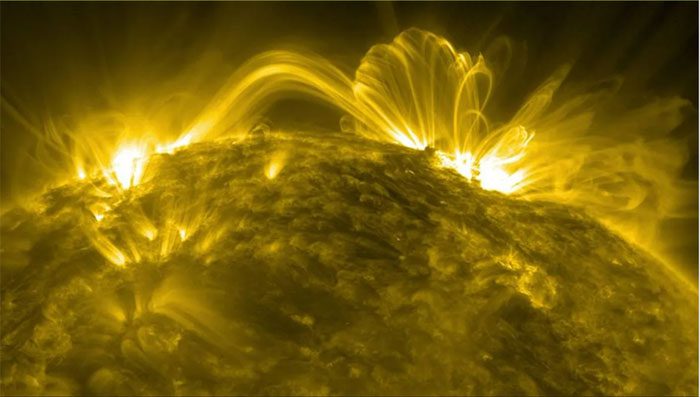Researchers, after modeling the activity of the Sun, have made a new prediction: the Sun will reach its peak activity in just 6-12 months.
Previous studies indicated that the Sun would reach its maximum activity in July 2025.

Coronal prominences on the Sun captured in ultraviolet light by the Atmospheric Imaging Assembly (AIA) – (Photo: NASA).
The new prediction is based on specific magnetic activities of the Sun and utilizes a phenomenon known as the Hale Cycle Termination Point.
In an interview with IFLScience, Dr. Scott McIntosh, deputy director of the National Center for Atmospheric Research (NCAR), stated that predicting solar activity is not an easy task. Scientists are using models that rely solely on partial observations of solar activity during the Hale Cycle.
Each solar cycle typically lasts about 11 years. During this cycle, the Sun’s energy activity intensifies as it approaches its “maximum” phase.
At this peak stage, the magnetic poles gradually reverse, with the north pole becoming the south pole on the Sun. Subsequently, the Sun’s energy activity decreases to a “minimum” level, marking the beginning of another solar cycle.
The exact length of a cycle is not always 11 years; the shortest is 8 years and the longest is 14 years.
The Hale Cycle consists of 2 solar cycles, typically lasting 22 years.
We are currently in Solar Cycle 25 (SC25).
Our Sun is a hot, glowing ball of gas filled with charged particles, generating the Sun’s powerful magnetic field. The high temperatures cause these charged gases to continuously move around the Sun, resulting in significant activity on its surface.
Currently, solar energy activity is much stronger than previously predicted. The Sun has consistently ejected massive coronal mass ejections (CMEs) from its surface and sent high-intensity plasma bursts into space.
Recently, Earth has been under continuous alert from scientists whenever plasma bursts directed at it disrupt satellites, GPS systems, the internet, and power grids.





















































